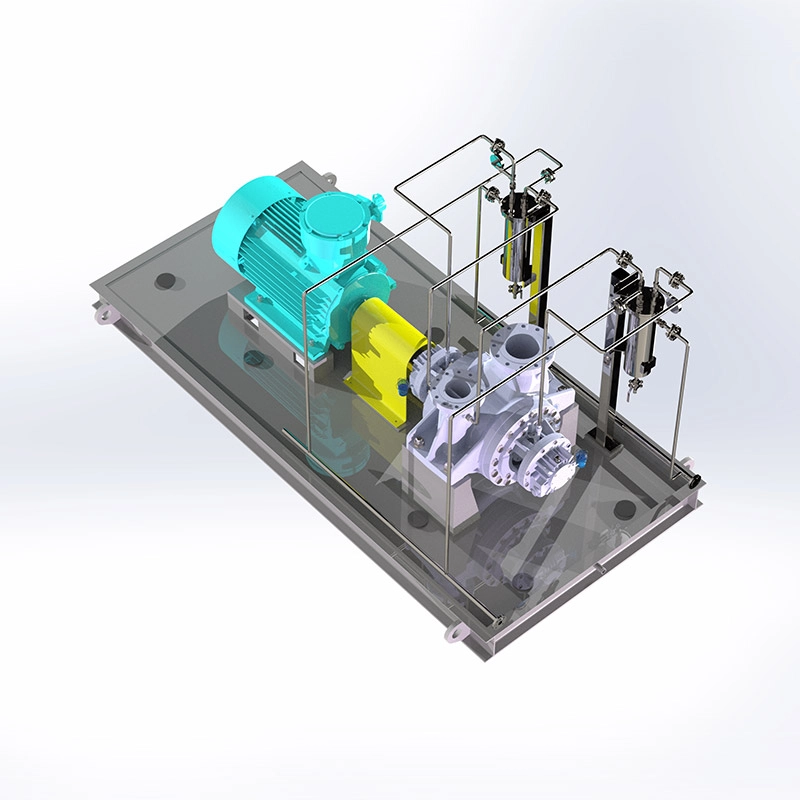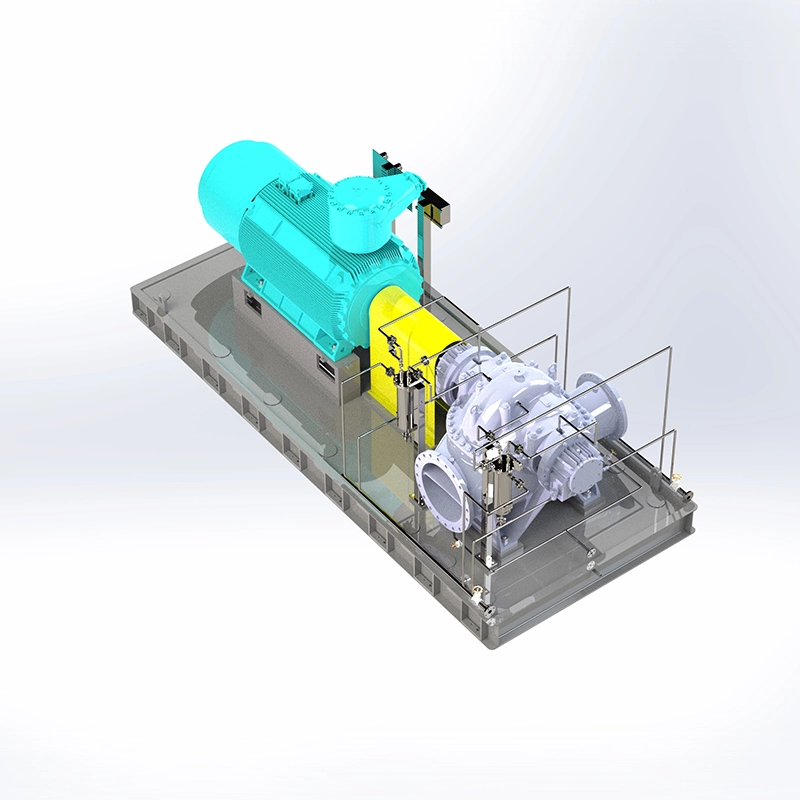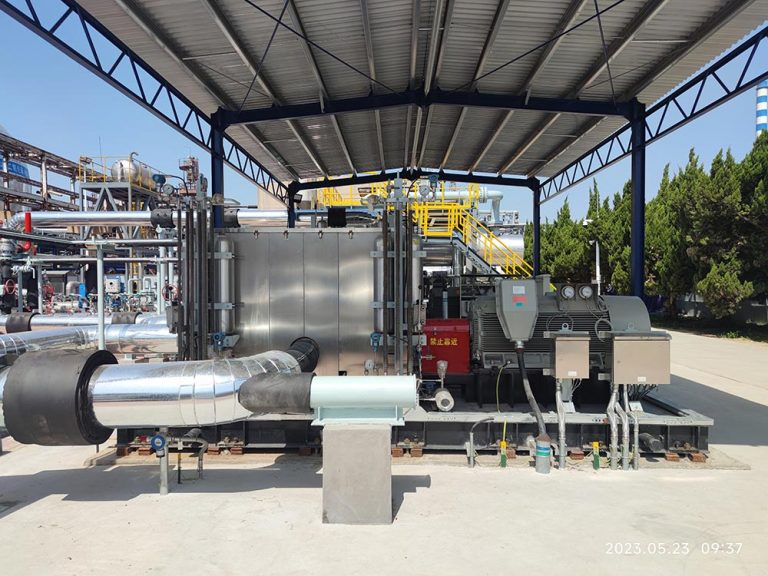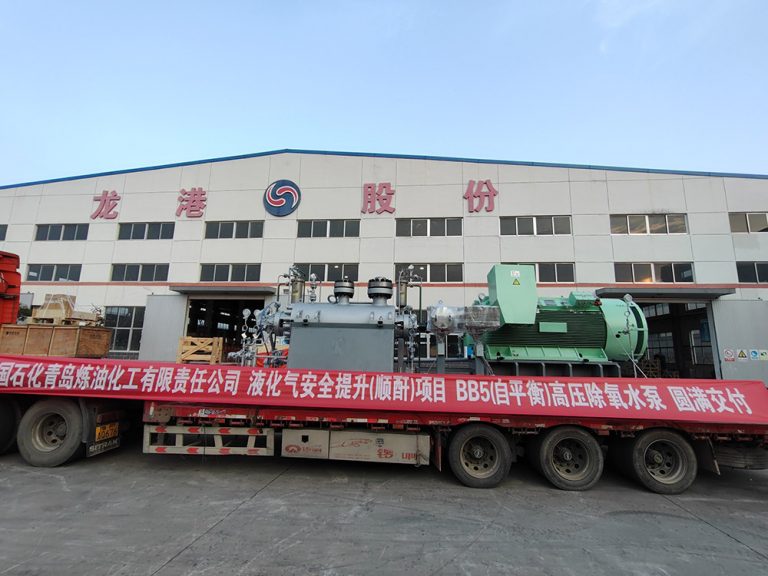
Handling substantial fluid movement is a foundation of sectors like petrochemicals, water management, and energy production. Choosing the perfect pump can determine your operation’s success. Two prominent choices are radial flow pumps and axial flow pumps. Each provides distinct advantages depending on your requirements—whether pressure, flow volume, or system layout. This article explores their differences, uses, and vital factors to assist you in selecting smartly for your fluid transfer tasks.
What Are Radial and Axial Flow Pumps?
Grasping the essentials of these pumps is the initial move toward a sound choice.
What Are Radial Flow Pumps?
Radial flow pumps, often termed centrifugal pumps, shift liquid outward from the pump shaft. Fluid enters the impeller’s middle. It is then thrust outward by centrifugal force. The liquid departs at a right angle. This setup shines at creating strong pressure, making it suitable for jobs needing notable lift.
What Are Axial Flow Pumps?
Axial flow pumps propel liquid along the shaft’s path. The impeller, similar to a propeller, moves fluid directly through. Designed for abundant flow with slight pressure increase, these pumps fit tasks demanding swift, large-scale liquid transfer.
Comparing Radial vs Axial Flow Pumps
To find the ideal pump for significant fluid transfer, you must understand how radial vs axial flow pumps vary in mechanics, effectiveness, and utility.
How They Handle Flow and Pressure
- Radial Flow Pumps: Liquid exits outward, offering robust pressure with fair flow amounts. They’re excellent for beating resistance in setups like oil refineries or chemical facilities.
- Axial Flow Pumps: Liquid travels axially. This delivers plentiful flow with little pressure rise. They perform superbly in moving huge water quantities, such as in irrigation or flood prevention.
Performance Specs at a Glance
| Aspect | Radial Flow Pumps | Axial Flow Pumps |
| Flow Volume | Fair (10–4000 m³/h) | Abundant (160–8500 m³/h) |
| Lift | Strong (up to 600 m) | Mild (10–460 m) |
| Ideal Use | High-pressure, low-flow | High-flow, low-pressure |
| Main Sectors | Petrochemical, industrial | Water supply, desalination |
Design and Maintenance Insights
Radial pumps often have intricate builds, like double volute casings, to steady forces and prolong bearing durability. This strength fits tough environments. However, it might extend fixing time. Axial pumps boast simpler axial-split layouts. These allow rapid rotor access without moving pipes. This is perfect for quick maintenance. Check options like the LBD(BB2) Radial Dissection Chemical Process Centrifugal Pump for radial needs or the LAD(BB1) Axial Split Double Suction Centrifugal Pump for axial solutions.
Where Radial vs Axial Flow Pumps Shine
Your task defines the pump selection. Here’s how radial vs axial flow pumps fare in practical situations.
Radial Flow Pumps: Masters of Pressure
Radial pumps excel where intense pressure is essential. In petrochemical plants, they manage harsh, hot liquids like crude oil or quenching oil. They handle pressures up to 15 MPa. This makes them crucial for processes like ammonia creation or coal processing, where liquid resistance is substantial. Their skill in pushing fluids through challenging systems is unmatched.

Axial Flow Pumps: Champions of Volume
Axial pumps lead in high-flow, low-lift duties. They’re favored for water supply networks, desalination units, and irrigation projects. They move up to 8500 m³/h. Systems like combined cycle energy plants or solar power fluid cycles depend on their ability to transfer vast amounts efficiently. When speed and volume outweigh pressure, axial pumps are your partner.

Factors to Weigh Before Choosing
Deciding between radial vs axial flow pumps depends on matching their benefits to your project’s needs. Consider these elements.
Fluid Properties
- Thickness: Radial pumps handle dense liquids (e.g., oil) well due to their pressure strength. Axial pumps prefer thinner liquids like water.
- Heat: Radial pumps manage warm liquids (up to 450°C) with centerline builds. Axial pumps suit gentler ranges (-20°C to 210°C).
System Needs
- Flow vs. Lift: Strong lift needs radial pumps. Abundant flow requires axial pumps.
- Space: Axial pumps’ smaller size fits snug areas better than radial designs.
Budget and Lifespan
Radial pumps may demand a higher starting cost due to complex structures. Yet, their resilience in harsh conditions can offset this over time. Axial pumps provide lower early costs and upkeep for large-volume, simpler tasks. Weighing short-term gains against lasting dependability is critical.
Advanced Features of Modern Pumps
Current pumps include upgrades that enhance output. Radial pumps might feature double-suction impellers to reduce cavitation threats. Axial pumps often have sturdy shafts for steadiness at fast speeds.
Yantai Longgang Pump Industry: Your Pump Partner
For top-quality radial and axial flow pumps, Yantai Longgang Pump Industry Co., Ltd. excels. Based in China, this supplier serves major firms like CNPC, Sinopec, and CNOOC. It offers API610-compliant solutions for petrochemical, coal chemical, and water sectors. With over 700 workers and a 70-person research team, Longgang provides creative pumps like the radial LBD(BB2) and axial LAD(BB1). Their focus on quality and swift service makes them a trusted ally.
FAQs About Radial vs Axial Flow Pumps
Q1. What separates radial vs axial flow pumps?
A1. Radial flow pumps shift liquid outward for strong pressure. Axial flow pumps push it along the shaft for plentiful flow.
Q2. When are radial flow pumps the better pick?
A2. Opt for radial flow pumps for intense pressure needs, like chemical processing. They’re not suited for high-volume, low-pressure jobs.
Q3. Can axial flow pumps manage high pressure?
A3. No, axial flow pumps focus on flow over pressure. They’re unfit for high-lift tasks.
Q4. How do radial vs axial flow pumps affect power use?
A4. Radial pumps may need more energy for pressure-heavy roles. Axial pumps save energy in high-flow, low-pressure setups.
Ready to Optimize Your Fluid Transfer?
Picking between radial and axial flow pumps becomes easier when you align their strengths with your aims. Whether it’s pressure for petrochemicals or volume for water systems, the right pump enhances efficiency. Explore our products for tailored options. Reach out now to improve your operations with the ideal pump!









